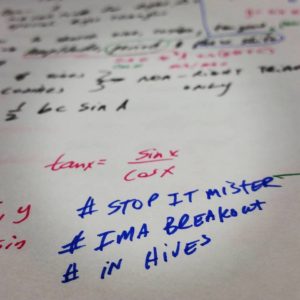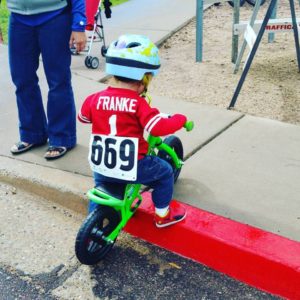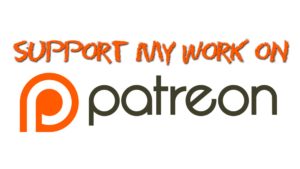 Math is something that cannot be taught, but can be learned. Yet, math is taught in a top-down style, as if access to information will make a student successful, and remediation is rehearsal of that same information. Earnest students copy down everything, exactly like the teacher has written on the board, but often still struggle and fail to comprehend what is happening. I argue that if copying things down was a worthy exercise, why not just copy the textbook, cover to cover. Of course such an activity would yield little benefit at all because math is a thing you do more than it is a thing you know. Math is only partly knowledge based and the facts are rarely the issue that causes trouble for students. I’d like to propose that you, either parent, student, administrator or teacher, considers math in a different light and perhaps with some adjustment the subject that caused such frustration will be a source of celebration.
Math is something that cannot be taught, but can be learned. Yet, math is taught in a top-down style, as if access to information will make a student successful, and remediation is rehearsal of that same information. Earnest students copy down everything, exactly like the teacher has written on the board, but often still struggle and fail to comprehend what is happening. I argue that if copying things down was a worthy exercise, why not just copy the textbook, cover to cover. Of course such an activity would yield little benefit at all because math is a thing you do more than it is a thing you know. Math is only partly knowledge based and the facts are rarely the issue that causes trouble for students. I’d like to propose that you, either parent, student, administrator or teacher, considers math in a different light and perhaps with some adjustment the subject that caused such frustration will be a source of celebration.
There are many things that cannot be taught but can be learned. A few examples are riding a bike, playing an instrument, creative writing and teaching. Without question knowledge is a key component to all of these things, but it is rarely the limiting factor to success or performance. Instead, the skill involved is usually the greatest limiting factor. I argue that to learn these things a series of mistakes, incrementally increasing in complexity, must be made in order to learn. Let’s see if this will make more sense with a pair of analogies.
First, watching someone perform something that is largely skill-based is of little use. Consider driving a car. A fifteen year old child has spent their entire life observing other people drive. And yet, when they get behind the wheel for the first time, they’re hopelessly dangerous to themselves and all others on, or just near, the roads!
Second considering learning to ride a bike. Sure, the parts of the bike are explained to the child, but they have to get on and try on their own. The actually learning doesn’t really occur until the parent lets go (letting go is huge!) and the child rolls along for a few feet until they fall over. Eventually they get the hang of the balance but then crash because they don’t know how to stop. After they master braking they crash because they don’t know how to turn. And then speed, terrain, and other obstacles get thrown in the mix. Each skill must be mastered in order. Preemptively explaining the skills, or practicing them out of context does not help the child learn to ride a bike. They must make the mistakes, reflect, adjust and try again.
to ride a bike. Sure, the parts of the bike are explained to the child, but they have to get on and try on their own. The actually learning doesn’t really occur until the parent lets go (letting go is huge!) and the child rolls along for a few feet until they fall over. Eventually they get the hang of the balance but then crash because they don’t know how to stop. After they master braking they crash because they don’t know how to turn. And then speed, terrain, and other obstacles get thrown in the mix. Each skill must be mastered in order. Preemptively explaining the skills, or practicing them out of context does not help the child learn to ride a bike. They must make the mistakes, reflect, adjust and try again.
What a math teacher can provide is the information required, but more importantly feedback, direction and encouragement. If a student understands that making mistakes isn’t just part of learning, but that a mistake is the opportunity to learn (and without it only imitation has occurred), and a teacher helps provide guidance, encouragement and feedback, then both parties will experience far greater success. When a math teacher completes a problem for a student it is similar to an adult taking the bicycle away from the child and riding it for them. When a student gives up on a problem, it’s as if they stopped the car and got out, allowing the adult to drive them home.
The job of math teacher is perhaps a bad arrangement of words. Coach, mentor or sponsor is perhaps more appropriate. There is no magic series of words, chanted under any circumstance, that will enlighten a struggling student. The frustration making mistakes should be cast in a different light, a positive light. The responsibility of learning is entirely on the student. They cannot look to teachers, friends or tutors for much beyond explanation of facts.
In a future post I will explain how too much direction and top-down teaching of math promotes failure of retention and inability to apply skills in new applications. But for now, please consider that math cannot be taught. A teacher cannot teach it, but can help a student to learn.
Thank you for reading,
The Bearded Math Man




